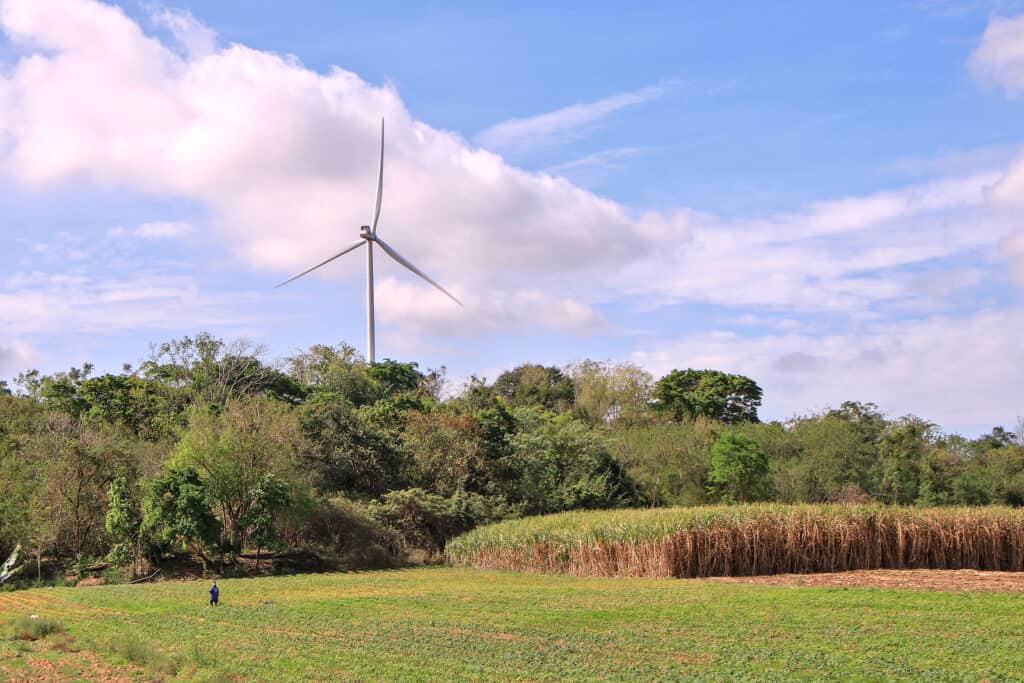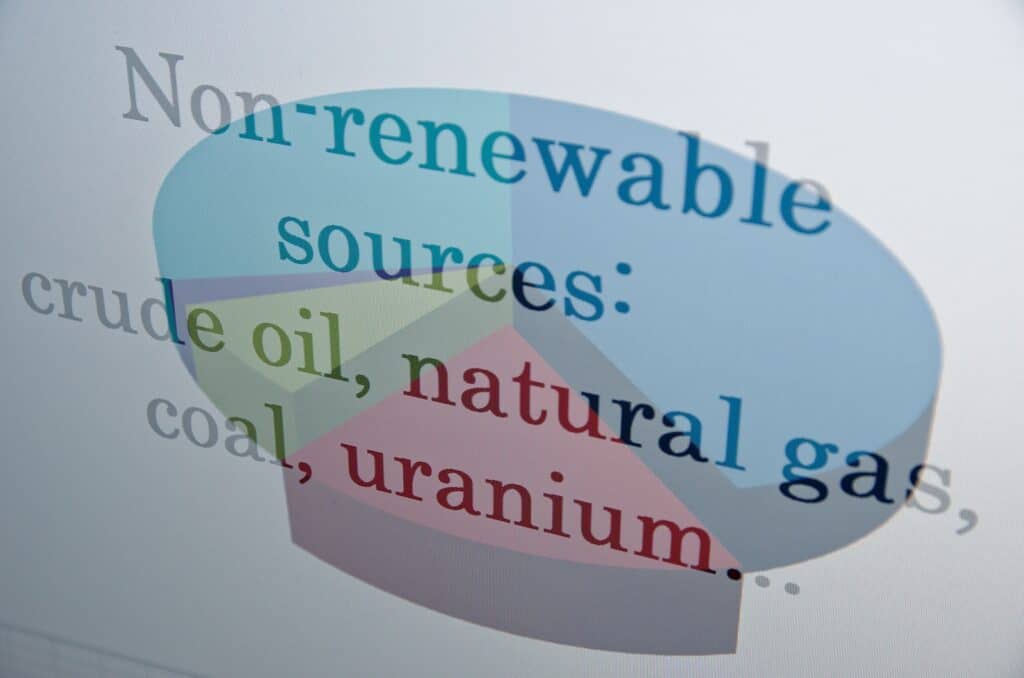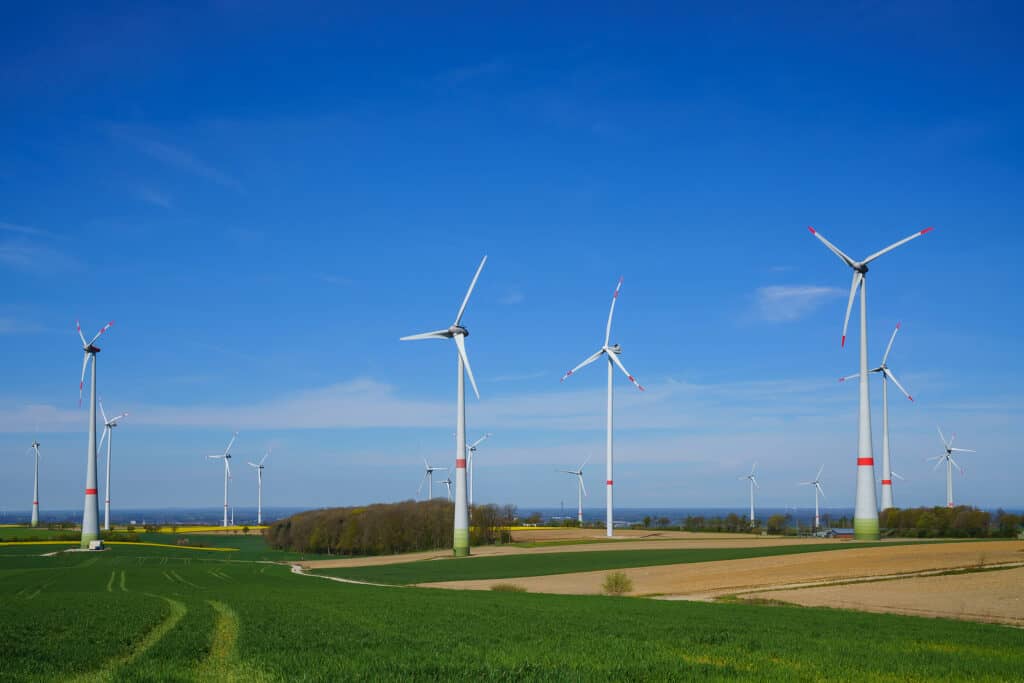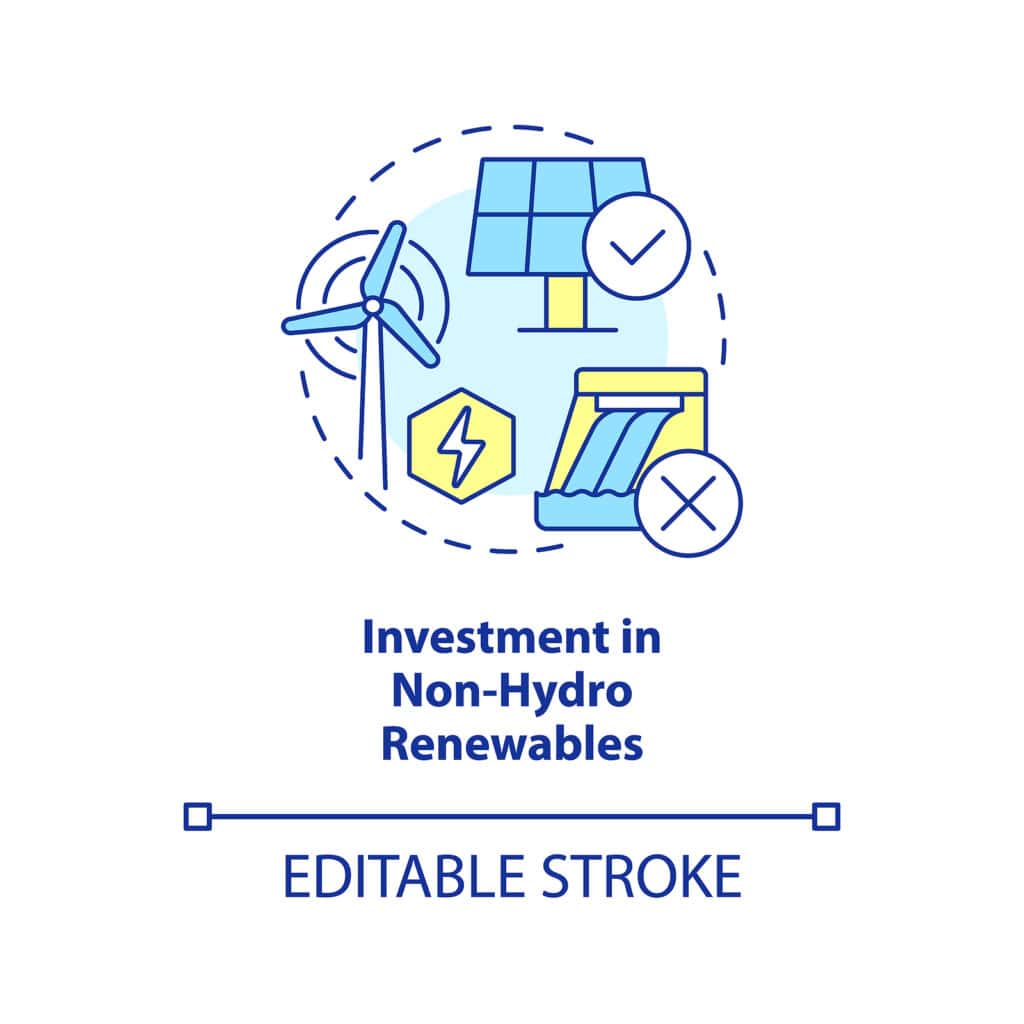Investing in Non-Renewable Energy
As a company with a well-established non-renewable energy infrastructure, we are acutely aware of the evolving landscape of the global energy industry. Embracing the era of global energy transformation, we understand the importance of considering all aspects of our energy practices, including the role of non-renewable energy sources.
While we recognize the pressing need to transition to more sustainable and renewable energy options, we also acknowledge the challenges involved. The decision to invest in renewable sources requires a deep comprehension of various factors, ranging from global energy dynamics and industry trends to environmental implications and financial considerations.
What Is Non-Renewable Energy?
Non-renewable energy is a type of energy derived from sources that cannot be naturally replenished within the span of a human lifetime. These energy sources are finite and once depleted, they cannot be easily replaced. Among the primary examples of non-renewable energy are fossil fuels like coal, oil, and natural gas, as well as nuclear energy.
Fossil fuels, formed over millions of years from the remains of ancient plants and animals, have played a pivotal role in sustaining our global energy demands for many decades. They have been the backbone of the world's energy supply, contributing significantly to various sectors like transportation, electricity generation, industrial processes, and more.
Coal, one of the oldest and most abundant non-renewable resources, has been extensively used for electricity generation and heating. Oil, extracted from underground reservoirs, powers transportation systems, fuels machinery, and serves as the foundation for numerous everyday products. Natural gas, a byproduct of decaying organic matter, is harnessed for heating, electricity, and industrial applications.

Why Invest in Non-Renewable Energy?
Investing in non-renewable energy remains a compelling option despite the ongoing transition towards renewable energy sources. Several factors contribute to the continued interest in non-renewables:
Continued Demand
Many emerging markets and developing economies, while recognizing the importance of sustainable practices, still heavily rely on non-renewable energy sources to meet their rapidly growing energy demands. As these economies strive for industrialization and economic growth, the demand for traditional energy sources like coal, oil, and natural gas remains high.
Profitability
The non-renewable energy sector, particularly oil and gas, has historically demonstrated strong profitability. These industries have been key drivers of economic growth and have provided investors with attractive dividends and consistent returns. As a result, financial incentives make non-renewable energy investments appealing to stakeholders.
Existing Infrastructure
Non-renewable energy sources have well-established infrastructure and distribution networks worldwide. The significant investments already made in these industries make it more challenging to rapidly replace them with renewable alternatives. As a result, investors may choose to capitalize on the existing infrastructure and the efficiency of these energy sources.
Technological Advancements
Advancements in technology offer glimpses of hope for improving the sustainability and efficiency of non-renewable energy sources. Carbon capture and storage (CCS) technologies, for instance, aim to capture carbon dioxide emissions from power plants and industrial facilities, reducing their impact on the environment. Furthermore, nuclear fusion, if successfully harnessed, could provide a virtually limitless and clean source of energy, revolutionizing the nuclear energy landscape.
Energy Security
Non-renewable energy sources have historically been associated with energy security, as countries with substantial reserves can rely on their own resources rather than being dependent on imports. This aspect continues to drive investments in these energy sectors, ensuring a degree of stability in energy supplies.
Global Energy Mix
Transitioning entirely to renewable energy sources requires time and substantial investments. As the world works towards diversifying the energy mix, non-renewables continue to play a crucial role as a bridge between fossil fuels and renewable energy.

Factors to Consider Before Investing in Non-Renewable Energy
Careful consideration of various factors is essential before making investments in non-renewable energy. The following key aspects warrant attention:
Market Volatility
Non-renewable energy markets are known for their inherent volatility. The prices of fossil fuels, such as oil and natural gas, are influenced by a myriad of factors, including geopolitical tensions, global economic conditions, supply disruptions caused by natural disasters, and unexpected shifts in demand. Investors need to be prepared for sudden price fluctuations and the potential impact on investment returns.
Regulatory Risk
The regulatory landscape surrounding non-renewable energy is subject to continuous change. Governments worldwide are increasingly implementing stricter environmental regulations to address climate change and reduce greenhouse gas emissions. These regulatory changes can directly affect the profitability and feasibility of non-renewable energy projects. For instance, the introduction of carbon taxes, emission trading schemes, or stringent pollution control measures can significantly impact the financial outlook for fossil fuel-based ventures.
Transition to Renewables
The global drive towards renewable energy sources poses a long-term challenge for non-renewable energy investments. As countries and industries increasingly shift towards cleaner and more sustainable alternatives, there is a real risk of reduced demand for traditional fossil fuels and nuclear energy. This transition could lead to a decrease in the value of non-renewable energy assets and potentially leave investors with stranded assets that may not yield the expected returns.
Environmental Concerns
Investors should take into account the growing awareness and concern about the environmental impact of non-renewable energy sources. The public and stakeholders increasingly demand sustainable and environmentally friendly solutions, which may influence the social license to operate for non-renewable energy companies. Failure to address these concerns adequately could lead to reputational damage and potential divestment pressures.
Technological Advancements
Advancements in renewable energy technologies continue to accelerate, making them more economically viable and competitive with traditional energy sources. The increasing efficiency and falling costs of renewable energy systems could further accelerate the transition away from non-renewable energy.
Resource Depletion
Non-renewable energy sources are finite resources that will eventually deplete. As reserves are gradually consumed, the extraction process becomes more challenging and costly, potentially impacting profitability.
Geopolitical Risks
Non-renewable energy investments can be influenced by geopolitical tensions and conflicts in regions that are major producers or suppliers of fossil fuels. Political instability and disruptions to the supply chain can affect energy prices and create uncertainty for investors.

Investing in Different Non-Renewable Energy Sectors
When considering investments in various non-renewable energy sectors, it is essential to understand the distinct dynamics and factors at play in each sector. Here's a more detailed overview of the key aspects of each sector:
Oil and Gas
The oil and gas sector, known for its profitability, plays a critical role in meeting global energy demands. However, it is also susceptible to significant market volatility influenced by geopolitical tensions, supply-demand imbalances, and global economic conditions. Technological advancements, such as hydraulic fracturing (fracking), have revolutionized the industry by making previously inaccessible reserves economically viable.
These advancements, along with exploration and production technologies, influence the market dynamics and supply levels. As an investor in this sector, it is crucial to closely monitor geopolitical developments, technological advancements, and global energy trends to make informed decisions.
Coal
Coal has been a staple non-renewable energy source for decades, powering electricity generation and industrial processes. However, it has faced a decline in usage due to environmental concerns related to greenhouse gas emissions and air pollution. Many countries and regions are transitioning away from coal-fired power plants in favor of cleaner alternatives. Despite this decline, coal remains a significant energy source, particularly in developing countries, where it continues to play a crucial role in meeting energy needs.
Investors considering coal investments should be aware of the environmental and regulatory risks associated with this sector. Stricter emission regulations and the global shift towards cleaner energy sources could impact the long-term viability of coal investments.
Nuclear Energy
Nuclear energy contributes significantly to global electricity generation, providing a low-carbon alternative to fossil fuels. It is not without challenges, however, including concerns about nuclear waste disposal and safety issues. The nuclear energy sector requires substantial investments in safety measures and compliance with stringent regulations.
Despite these challenges, technological innovations offer promise for the future of nuclear energy. Small modular reactors (SMRs) are being developed, which are expected to be safer, more efficient, and cost-effective. Additionally, nuclear fusion research aims to unlock a nearly limitless and environmentally friendly source of energy. Investors interested in nuclear energy should carefully consider the safety, regulatory, and technological aspects associated with the sector.
Environmental Impact and Social Responsibility
In today's investment landscape, the focus on ESG (Environmental, Social, and Governance) criteria has gained significant traction. As investors increasingly prioritize sustainability and responsible practices, the environmental impact of non-renewable energy investments takes center stage. To make well-informed and socially responsible investment decisions, it is vital to delve deeper into the environmental implications of such investments while striving to strike a balance between profitability and responsible stewardship.
Environmental Impact Assessment
Conducting a thorough environmental impact assessment of potential non-renewable energy investments is crucial. This involves analyzing the carbon footprint, greenhouse gas emissions, and other environmental consequences associated with the extraction, processing, and utilization of non-renewable energy sources. Understanding the potential negative effects on air and water quality, biodiversity, and ecosystems is essential in evaluating the long-term viability and sustainability of such investments.
Carbon Intensity and Transition Risks
Assessing the carbon intensity of non-renewable energy assets is vital, as it helps investors gauge their exposure to climate transition risks. Climate-related regulations, carbon pricing, and the global shift towards renewable energy could significantly impact the financial performance of fossil fuel-based investments in the future. Factoring in these transition risks helps investors identify potential vulnerabilities and make informed choices that align with a low-carbon future.
Social Responsibility and Community Impact
Investors should also consider the social responsibility aspect of non-renewable energy investments. Examining the effects on local communities, including potential disruptions, health impacts, and job opportunities, is essential in understanding the broader social implications of such ventures. Engaging with stakeholders and fostering transparency in operations can contribute to positive social outcomes and help build a sustainable reputation.
Governance and Ethical Considerations
Good governance practices within non-renewable energy companies play a pivotal role in ensuring responsible decision-making and risk management. Investors should scrutinize the corporate governance structures, ethical standards, and transparency of the companies they consider investing in. Companies with robust governance frameworks are more likely to prioritize sustainability and responsible practices, which align with the principles of ESG investing.
Engagement and Advocacy
Engaging with companies in the non-renewable energy sector can be a powerful means to influence positive change. By advocating for environmental improvements, adherence to sustainability goals, and greater social responsibility, investors can drive positive impact and encourage companies to transition towards more sustainable practices.
Transition to Renewable Alternatives
Considering the long-term prospects of non-renewable energy investments, investors should be mindful of the global shift towards renewable energy. Evaluating the potential risks and opportunities arising from this transition can guide investment decisions that position portfolios for a sustainable energy future.
Conclusion
In this comprehensive guide, we delve into the complexities of investing in non-renewable energy from the perspective of a company with a well-established infrastructure. Acknowledging the global energy transformation, we emphasize the importance of considering all aspects, including global energy dynamics, industry trends, environmental implications, and financial factors. While recognizing the pressing need to transition to renewable energy, we explore the reasons why investing in non-renewables remains appealing, such as continued demand in emerging markets and profitability.
The guide provides a detailed overview of non-renewable energy sources like fossil fuels and nuclear energy. It also highlights key factors to consider before making investments in this sector, such as market volatility, regulatory risks, technological advancements, and environmental concerns. The importance of environmental impact assessments and social responsibility is emphasized, along with the need to evaluate the global shift towards renewables.

